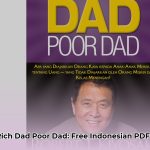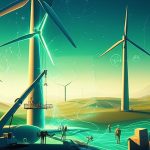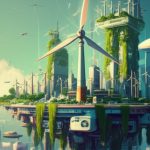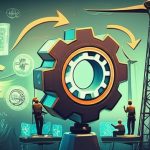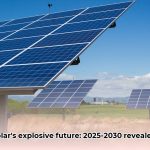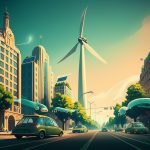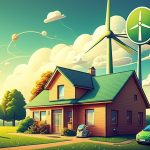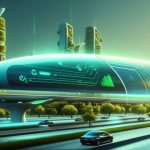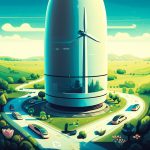Untuk gambaran yang lebih besar dan konteks penuh, pastikan Anda membaca panduan utama kami tentang Stunning Wind Turbine Images for Your Next Project.
The rising demand for renewable energy is placing unprecedented pressure on the supply chain of wind turbine pieces. Bottlenecks, material costs, and specialized labor shortages are impacting project timelines and profitability. Understanding these challenges and future trends is crucial for investors, developers, and anyone connected to the wind energy sector.
At a Glance:
- Identify the key components of a modern wind turbine and how their complexity affects manufacturing.
- Understand the current supply chain challenges impacting the availability and cost of wind turbine pieces.
- Explore technological innovations and material science advancements that could revolutionize wind turbine design and production.
- Learn about emerging market trends and their influence on the demand for specific wind turbine components.
- Gain insights into strategies for mitigating risks associated with sourcing and securing wind turbine pieces.
The Anatomy of a Wind Turbine: More Than Just Blades
Wind turbines are complex machines comprised of thousands of individual parts. The major components include the rotor blades, nacelle (housing the generator, gearbox, and other critical systems), tower, and foundation. Each of these assemblies depends on a network of specialized manufacturers and suppliers.
- Rotor Blades: These aerodynamic surfaces capture wind energy and convert it into rotational motion. Modern blades can exceed 100 meters in length and are typically made from fiberglass, carbon fiber, or a composite blend.
- Nacelle: The nacelle sits atop the tower and houses the most critical components: the generator, gearbox (in geared turbines), yaw system (which keeps the turbine aligned with the wind), and braking system.
- Tower: The tower provides height for the turbine, allowing it to access stronger and more consistent winds. Towers are usually constructed from steel, but concrete and hybrid steel-concrete designs are also used.
- Foundation: The foundation anchors the turbine to the ground and must withstand immense loads and stresses. Foundation designs vary depending on soil conditions and turbine size.
The complexity of these wind turbine pieces presents both challenges and opportunities for innovation in materials, manufacturing, and logistics.
Supply Chain Snags: Navigating Cost Hikes and Delays
The global supply chain for wind turbine pieces is facing significant headwinds. Increased demand, coupled with disruptions caused by geopolitical events and material shortages, has led to longer lead times and higher costs.
- Raw Material Price Volatility: The prices of steel, aluminum, copper, and rare earth elements – all critical to wind turbine construction – have experienced significant volatility in recent years. This directly impacts manufacturing costs. As an example, the cost of neodymium, used in permanent magnets for generators, has fluctuated dramatically.
- Manufacturing Capacity Constraints: The rapid growth of the wind energy sector has strained the capacity of manufacturers to produce wind turbine pieces at the required scale. Expanding production capacity requires significant investment and time.
- Logistics and Transportation Bottlenecks: Transporting large and heavy wind turbine components, especially blades and tower sections, presents logistical challenges. Port congestion, shipping delays, and a shortage of specialized transport vessels further exacerbate these issues.
- Skilled Labor Shortages: Manufacturing and maintaining wind turbines requires a skilled workforce, from welders and machinists to engineers and technicians. Shortages of qualified personnel can slow down production and increase labor costs.
Example: A wind farm project in Texas experienced a six-month delay due to a shortage of skilled welders needed to assemble tower sections. This delay resulted in significant cost overruns and lost revenue.
Innovating the Future: Materials and Manufacturing on the Horizon
The wind energy industry is actively pursuing technological advancements and material science innovations to address the challenges posed by the supply chain and improve the performance and reliability of wind turbine pieces.
- Advanced Composites: Research is underway to develop lighter, stronger, and more durable composite materials for rotor blades. These materials could enable the production of longer blades, increasing energy capture and reducing the cost of energy.
- 3D Printing: Additive manufacturing (3D printing) is emerging as a promising technique for producing complex wind turbine components with greater efficiency and design flexibility. 3D printing could also enable on-site manufacturing, reducing transportation costs and lead times.
- Recyclable Blades: The industry is grappling with the challenge of recycling end-of-life wind turbine blades. New blade designs that incorporate recyclable materials are being developed to minimize environmental impact.
- Digitalization and Automation: The adoption of digital technologies, such as predictive maintenance and automated manufacturing processes, can improve efficiency, reduce downtime, and optimize the performance of wind turbines.
Actionable Tip: Stay abreast of research and development efforts in advanced materials and manufacturing techniques. Consider investing in companies that are developing innovative solutions for the wind energy sector.
Market Trends: Sizing Up the Demand Landscape
The global wind energy market is dynamic, with demand for wind turbine pieces influenced by various factors, including government policies, energy prices, and technological advancements.
- Offshore Wind Growth: The offshore wind sector is experiencing rapid growth, driving demand for larger and more powerful wind turbines designed for harsh marine environments. This requires specialized components that can withstand corrosion and extreme weather conditions.
- Repowering Opportunities: As older wind farms reach the end of their operational life, there is a growing trend toward repowering, which involves replacing existing turbines with newer, more efficient models. This creates demand for retrofit components and upgrades.
- Emerging Markets: Developing countries are increasingly investing in wind energy to meet their growing electricity demand. This presents opportunities for wind turbine manufacturers and suppliers to expand their presence in these markets.
- Direct Drive Turbines: Direct-drive turbines, which eliminate the need for a gearbox, are gaining popularity. This changes the demand for specific wind turbine pieces and could lead to innovation in generator and bearing technology.
Example: The increasing adoption of offshore wind in Europe is driving demand for larger blades, towers, and specialized installation vessels.
Risk Mitigation: Strategies for a Secure Supply
Securing a reliable supply of wind turbine pieces is critical for the success of wind energy projects. Developers and operators should implement strategies to mitigate risks associated with the supply chain.
- Diversify Suppliers: Avoid relying on a single supplier for critical components. Establish relationships with multiple vendors to reduce vulnerability to disruptions.
- Long-Term Contracts: Negotiate long-term contracts with key suppliers to secure pricing and availability.
- Inventory Management: Maintain adequate inventory levels of critical spare parts to minimize downtime.
- Supply Chain Visibility: Use technology to track the movement of components throughout the supply chain, enabling early detection of potential problems.
- Risk Assessment: Conduct regular risk assessments to identify potential vulnerabilities in the supply chain and develop contingency plans.
Decision Tree:
- Assess Project Needs: Determine the specific wind turbine pieces required for your project.
- Evaluate Suppliers: Research and qualify potential suppliers based on their experience, capacity, and financial stability.
- Negotiate Contracts: Negotiate favorable contract terms, including pricing, delivery schedules, and warranty provisions.
- Monitor Performance: Track supplier performance and address any issues promptly.
- Mitigate Risks: Implement strategies to mitigate risks associated with the supply chain, such as diversifying suppliers and maintaining adequate inventory levels.
Before visualizing the wind farm of your dreams, it pays to understand the nuts and bolts—or, in this case, the blades and nacelles—that make it all possible. Find wind turbine images here showcasing this technology in action, and use them as inspiration as you plan your next project.
Quick Answers: Common Questions About Wind Turbine Pieces
- Q: How often do wind turbine blades need to be replaced? A: Typically, wind turbine blades have a lifespan of 20-25 years. However, damage from lightning strikes, erosion, or manufacturing defects can necessitate earlier replacement.
- Q: What is the biggest challenge in manufacturing wind turbine blades? A: The sheer size and complexity of modern blades, combined with the need for high precision and durability, present significant manufacturing challenges. Transportation is also a major hurdle.
- Q: Are all wind turbine components manufactured in the same country where they are used? A: No. Wind turbine components are often manufactured in different countries and then shipped to the project site for assembly. This global supply chain can be complex and vulnerable to disruptions.
- Q: What are the environmental concerns associated with wind turbine pieces? A: The primary environmental concern is the disposal of end-of-life blades, which are difficult to recycle. Research is underway to develop more sustainable blade designs and recycling technologies.
- Q: What is the role of government subsidies in the wind turbine component market? A: Government subsidies and tax incentives play a significant role in driving demand for wind energy and, consequently, for wind turbine pieces. These policies can influence investment decisions and market growth.
Beyond the Horizon: A Greener Future Driven by Innovation
The future of the wind energy sector hinges on continued innovation in materials, manufacturing, and supply chain management. By embracing new technologies and adopting proactive risk mitigation strategies, the industry can overcome challenges and unlock its full potential as a clean and sustainable energy source. The demand for efficient, durable, and cost-effective wind turbine pieces will only continue to grow, creating opportunities for businesses and investors who are willing to adapt and innovate.

- Wind Turbine Pieces: Examining The Industrys Future Growth - November 9, 2025
- Wind Turbine Installation: Building the Future of Energy - November 7, 2025
- Stunning Wind Turbine Images for Your Next Project - November 5, 2025

